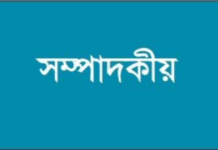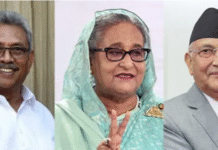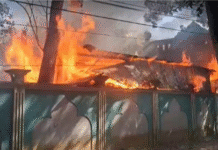Human consciousness was numbed by the unbearable shock of avoidable deaths and injuries of so many pilgrims at Mina where in 1990 as many as 1,426 people were killed in a similar stampede in KSA ruled by the world’s wealthiest oil Sheikhs. Our hearts go out to the families of the victims of this terrible tragedy from which they will never recover. We wonder in depressing bewilderment why the fabulously opulent rulers couldn’t learn any lesson from the previous mishaps; and instead of offering an apology for 1,100 deaths including 41 Bangladeshi pilgrims. Saudi health minister Khaled al-Falih described this as “God’s will”. He might say so if it were a ‘simoom’ or an earthquake; but it was not beyond human control.
Unsurprisingly Saudi authorities have faced sharp criticism over their safety record. Critics of the Saudi authorities noted it was less than a month since a crane accident in Makkah killed more than 100 people. Syria’s al-Ba’th blames the government for its “failure” to manage the Hajj properly while Iran’s al-Vefagh quotes an official as saying that Riyadh has shown for years that it is “inadequate” in handling the stone-throwing ritual. [Vide the Independent, UK: middle-east/mina-stampede-authorities-face-criticism]. The interior ministry has said it assigned 100,000 police to secure the Hajj and manage crowds. But pilgrims blamed the stampede on police road closures and poor management of the flow of hundreds of thousands of pilgrims.
Saudi Arabia has given foreign diplomats approximately 1,100 photographs of the dead from last week’s Hajj crush and stampede, Indian and Pakistani authorities said, an indication of a significantly higher death toll than previously offered by the KSA. The Saudi Health Ministry’s figures put the toll at 769 people killed and 934 injured, as reported by America Aljazeera dated September 28, 2015. [America.aljazeera.com/india-pakistan-say-some-1100-killed] Saudi authority’s casualty figure not only betrays transparency, it also causes suspicion as to whether there is a veil of secrecy to suppress facts.
It was learnt that all roads were blocked while the Saudi authorities removed dead bodies and cleaned bloodstained spots by using water hose within an hour—-whereas the enormous crowd of hundreds of thousands of people were ordered to stand still near Jamarat in the intense heat of 45 degrees Celsius. Consequently many people fell into a faint; but none of the ambulances —-running back and forth blaring sirens—- even stopped at those pilgrims who had fainted.
Ruled by the world’s wealthiest oil Sheikhs, KSA people lived in extreme poverty even 70 years ago in a vast desert under searing sun and shearing winds, living on only a few dates and camel’s milk. In those days and years of wretchedness philanthropists of this country stood beside them. Nawab Bahadur of Dhaka, Sir Khwaja Abdul Ghani Mian KCSI (1813–1896) donated Rupees 40,000 for renovation of Nahr-i-Zubaida at Makkah. Also from Bangladesh, Comilla-born poet and author Nawab Faizunnesa Choudhurani (1834–1903) built a charitable guesthouse and set up a Madrasa in Makkah. Besides, she paid monthly donation of Rupees 300—-a substantial amount in those days—-for many years until the partition of India for Sawlatiya Madrasa and Furkaniya Madrasa in Makkah. [Vide Faizunnesa Choudhurani by Mohammad Abdul Quddus, Bangla Academy, Dhaka, 1984].
Alas, in today’s Saudi Arabia many Bangladeshi labourers are treated as ‘miskin’ or beggars. How charity backfires!
Almighty Allah has bestowed immeasurable wealth upon them; now they have forgotten their benefactors. One of their princes has bought a fully customised Airbus A380 for $500 million. Had they have some amount of compassion and will they could alleviate global poverty to a considerable extent. Be that as it may, why didn’t they spend a small amount of their immense mountain of petro-dollars to secure safety of every pilgrim as stampede has been a recurring feature there? Do not these pilgrims bring at least $8.5 billion dollars for KSA every year?
Source: Weekly Holiday









